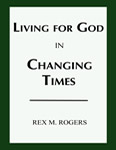Recently constructed homes are smaller than their predecessors. In fact, they buck a trend that’s been headed toward bigger-is-better since the 1950s.
The average size home in 1950 was 983 square feet. We’re more than twice that today, even with recent cutbacks.
The median size of a home in 2007 was 2,300 square feet. That’s median, the mid-point. A lot of homes topped 10,000 and in celebrity or other show-homes 20,000 plus square feet is common. This has happened despite the fact that the average size family has steadily declined, and these statistics don’t take into account those families that maintain two, three, and even four homes, cottages, condos, or flats.
While there’s nothing intrinsically wrong, as near as I can tell, with building a large home if you can afford it, people even with means are beginning to scale down their McMansions.
In 2010, the median size home being built has dropped to 2,100 square feet. But given the recession, many builders are now responding to consumer desire for even smaller homes between 1,500 and 2,000 square feet.
Sarah Susanka, the author of The Not So Big House, says even multiple bathrooms are passé. At least for the middle class, it seems that, for now, the day of Big Houses has gone the way of Big Hair.
What I find particularly interesting is the return of the front porch. The larger, “sit-able” front porch and detached, hidden garage are now in demand, as opposed to small front stoops and attached garages with two-car doors dominating the house front. For years I’ve watched and wondered what attracted people to houses with minimal-to-no front yards, huge garage doors, and small walkways around corners to almost hidden front doors. You might as well have put a sign on the front of the house saying, “We’re car people and we don’t really want to connect personally with neighbors.”
A lot of variables are encouraging the new trend to smaller homes with front porches: the recession, energy prices, two-worker families who spend relatively little time at home, reconsideration of what suburbia means if it offers cookie-cutter houses hidden behind fences, a nostalgic yearning for the perceived benefits of small town life, and an emerging desire for a return of human scale, an alternative to life in the urban jungle. If one has to work in the alienating rat race maybe at home one can find some sense of meaning and perspective.
In this postmodern age when everything is up for grabs, people are looking for anything that offers them a sense of stability, solace, and meaning. This is true in religion, the related but less defined search for “spirituality,” the professions, marriage and family.
It’s like we’ve rejected—
--the 50s as naïve,
--the 60s as chaotic free-for-all that turned out not to be free after all,
--the 70s as plastic and incoherent,
--the 80s as greedy,
--the 90s as sensitivity run amok, and
--the new millennial 00s as fear, anxiety, and loss of our confidence in who we once were, loss of our way, and loss of hope.
In the extreme, all that’s left is emotional surrender running to nihilism or denial running to hedonism. That sounds like an exaggeration, but I said “in the extreme.” Not everyone is ready to jump off a bridge or bury themselves in bacchanalia.
Still, certain cultural inclinations are visible and they affect our politics. As a nation we seem to have lost faith in our founding values, we don’t know who we are, we don’t agree on who we want to be, and so we don’t know where we’re going, much less how to get there. Doesn’t matter if it’s Democrats or Republicans, no one seems to be able to articulate a clear and resonant vision for the future.
I know this is a lot to glean from trends toward smaller houses with larger front porches. But rather than become morose I prefer to look for signs of renewal in the human spirit. I'm hoping we're trying to right ourselves, re-centering the bubble in our cultural level.
I like the trend toward smaller houses with larger front porches and detached, somewhat hidden garages. Along the way, I hope we rediscover and recover a lot more worthy small town, uniquely American values.
© Rex M. Rogers – All Rights Reserved, 2010
*This blog may be reproduced in whole or in part with a full attribution statement. Contact Dr. Rogers or read more commentary on current issues and events at www.rexmrogers.com or follow Dr. Rogers at www.twitter.com/RexMRogers.


